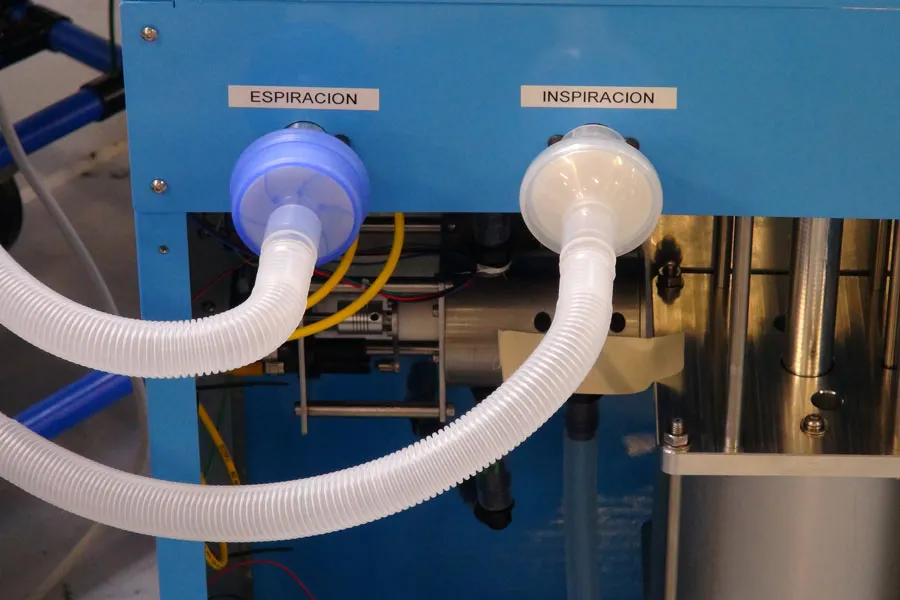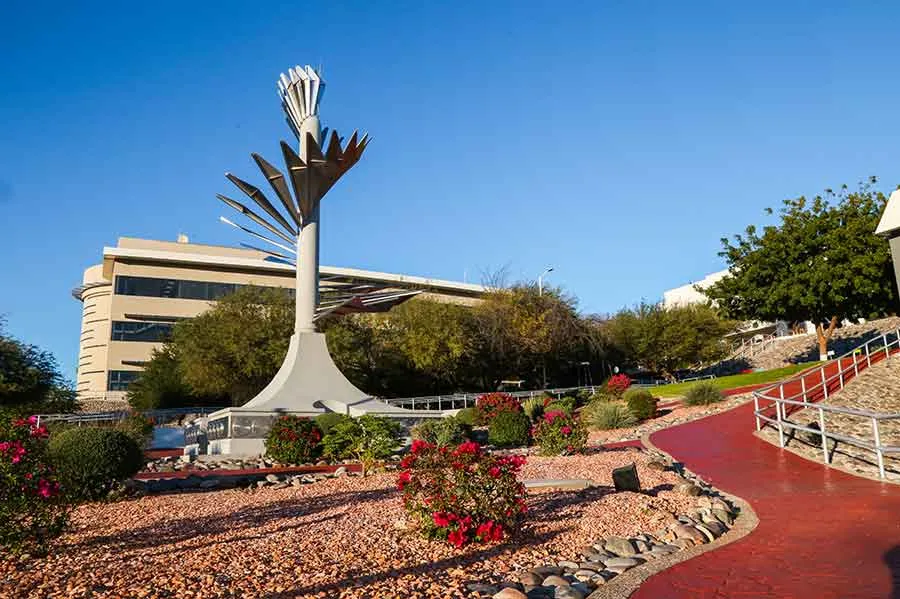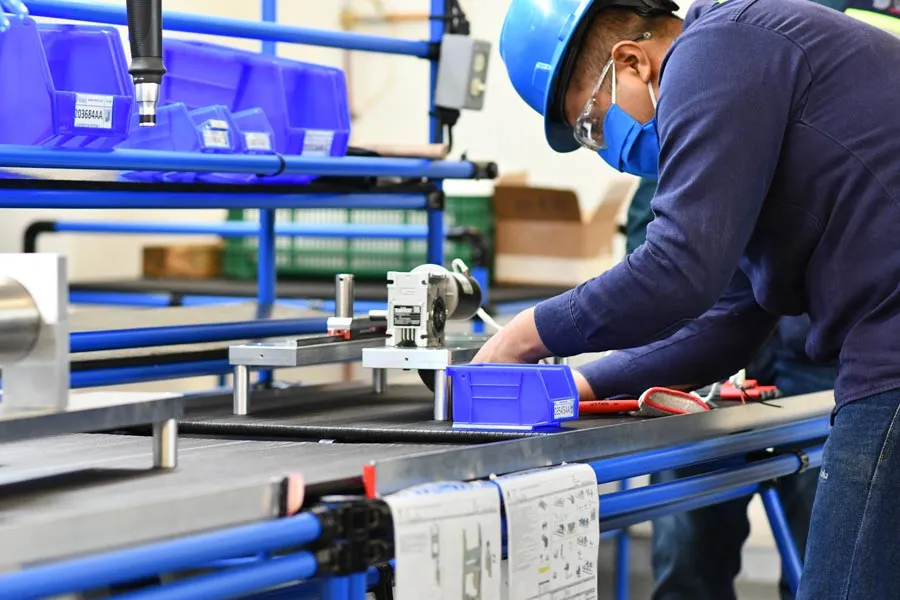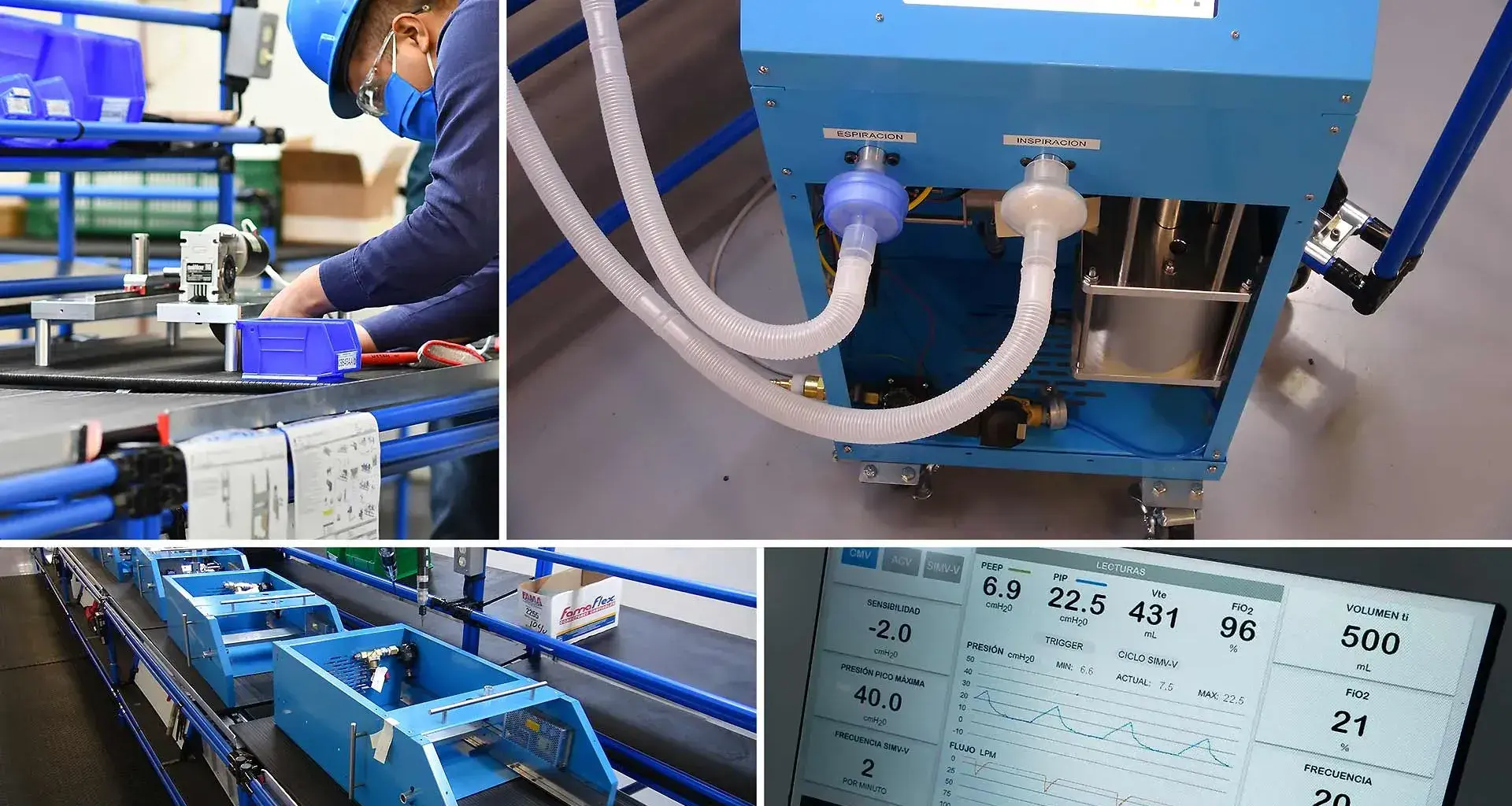“We haven’t slept in the 4 months we’ve been working on this, but I think that if we can save lives, the satisfaction will be huge.”
These are the words of Ramsés Galaz, a Mexican engineer, who, together with his company GSE Biomedical, faced the challenge of creating an emergency ventilator to provide artificial respiration to COVID patients.
Along the way, Ramsés and his team came across other people and groups seeking the same outcome: the government, FEMSA, Metalsa, Coppel, and Tec de Monterrey, among others.
They joined forces and managed to design, produce and approve an automatic Mexican ventilator for use in record time: the VSZ-20-2 ventilator.

Originally from Hermosillo, Sonora, Ramsés decided that he would dedicate his life to producing medical devices to positively impact the community 15 years ago, 5 years after his father died of a heart attack.
A graduate of the Tec de Monterrey campus in Monterrey, Ramsés has been a lecturer in Biomedical Engineering at Tec de Monterrey on several campuses for more than a decade, as well as having been Director of Research and Postgraduate Programs at the Northern Sonora campus.
In recent years, Ramsés has designed various devices with his company and it has expanded to Canada, where he studied both his master’s and doctorate.
“We’ve done very important things: we developed the 1st 100% Mexican stent with the National Institute of Cardiology, and we have FDA approval in the United States for an arthroscopic surgery device.
We have a company in Canada that develops bioabsorbable endovascular implants (…). We’ve also done projects to create titanium tumor prostheses. We’ve applied for 48 patents and have had 26 granted,” he tells CONECTA.

THE DREAM OF A MEXICAN VENTILATOR
Although they didn’t yet have sufficient resources for a challenge of this magnitude, Ramsés and his team began working on the development of an artificial respiration ventilator in March.
Arnoldo Heredia, another Tec graduate, the original lead engineer of the project and, in the words of Ramsés, “the brain behind the technical part and the ‘guts’: the control, the screen, an so on,” explains that even though, in March, there weren’t yet many cases of COVID-19 in Mexico, they wanted to hurry as much as possible.
“We said: ‘We’re going to give it our all because it’s very important.’ As medical engineers, what we do is translate doctors’ needs into solutions, and we worked with medical experts on ventilators who were also already familiar with the COVID-19 disease.”
The first help came through a call. Sonoran businessman, José Coppel wanted to support Ramsés and his team to build a ventilator.
“Support was provided by Mr. Coppel, who understands that it’s important to support Mexican talent. He’s someone who’s very interested in health and vulnerability issues. There’s a relationship with Ramsés through the Tec de Monterrey Northern Sonora campus, and this support coincided,” says Marco Antonio Paz, from Coppel’s Institutional Relations department.
This prompted the team to work faster. “With the financial support, I recruited more engineers and told them we were going to work 24/7 on this,” says Ramsés.

TEC DE MONTERREY’S ROLE IN CREATING THE VENTILATOR
Given the shortage of ventilators around the world and, as it was known that it would be a necessity for Mexico, Tec de Monterrey commissioned its vice president for the Northern Region, Mario Adrián Flores, to coordinate the institution’s collaboration in the creation of these devices through its own or external initiatives.
“We began to receive ideas, proposals. At the time, we had about 15 initiatives supported by the Tec. Some were discarded, but others, like this one which has already been completed, are also still active,” Flores tells CONECTA.
“In this context, I received a call from our board member José Coppel, who told me: ‘I’ve made the decision to support Ramsés with a ventilator. And I want to invite Tec to support it, too.’ The project was begun with that seed capital and we looked for ways to help.”
Flores explained that, at first, Tec facilities and equipment were used and, in the phase with FEMSA and Metalsa, they supported the project with advice and equipment validation tests, as well as the preparation of project manuals and training materials.
“We opened the Monterrey campus workshops to print circuit boards that Ramsés and his team needed. We produced them, thanks to support from lecturers in the School of Engineering.
“Later, in the second stage, the ventilator’s first validation tests were carried out in collaboration with the School of Medicine and TecSalud.”
Professor Ramsés then asked for help from Tec Biomedical Engineering students to prepare the ventilator user manuals and the Tec created a website with edited manuals and training videos for doctors.
CEDDIE, the TEC21 Educational Model teacher training center, directed by Claudia López, edited the manuals and produced videos and a website. The Tec is designing this space to help them with training, so that doctors can see how the ventilator is used,” said Flores.
Ana Cristina Corona, a Biomedical Engineering student and former leader of the student chapter of the Biomedical Engineering Society (Monterrey), shared experiences of the project on which she and other 6 fellow students collaborated:
“It was a great opportunity to help. (…) It’s like our contribution, our part in supporting people during the pandemic.
“One of my relatives has died of coronavirus. It’s very heartening to feel that you’re supporting a tangible project, which will be a support for many in Mexico right now.”

FEMSA, METALSA AND OTHER COMPANIES BROUGHT TOGETHER BY THE MEXICAN VENTILATOR
In April, the efforts of Ramsés’ team were joined by those of Mexican engineers from prominent Mexican companies such as FEMSA and Metalsa.
Salvador Almaguer (a Mexican who had previously led European companies linked to the automotive sector) had only been in his position as Director of Operations for FEMSA Food Services for 4 months when he received the task of supporting the construction of Mexican ventilators.
“I was just beginning to focus on refrigerator production, when I also began researching ventilators,” he recalls.
The government, through the Salvador Zubirán National Institute of Medical Sciences and Nutrition (INCMNSZ), CENAPRECE, and the Ministry of Foreign Affairs, had asked companies and institutions to work together to produce a ventilator within the framework of the “Together for Health” initiative.
They would go on to be joined by other institutions, such as Tec de Monterrey.
“There was a lot of collaboration with Ramses’ team. For instance, Arnoldo the engineer, who is very good, came to work in Monterrey for a whole month and was working with people from Metalsa: Fernando Garza, Carlos Guerra, and their design people. We became a team,” says Ricardo Alemán, director of the company.
Metalsa supported the development of the assembly and manufacturing process, which has already been authorized by COFEPRIS and will in fact be the company to assemble the ventilators at its Apodaca, Nuevo León plant at the request of the government.
“We had to build a new production line because the processes are, of course, different from our traditional line of business. It’s an exclusive line, totally new (…) We moved as if we were a startup: very quickly,” he adds.

THE GOAL: SAVING LIVES WITH THE VENTILATOR
“Right now, due to the pandemic, the important thing is to have enough ventilators in case someone needs to be intubated. That’s why these developments are extremely important,” Dr. Guillermo Domínguez, deputy director of Critical Medicine at INCMNSZ, tells CONECTA.
The INCMNSZ is the Ministry of Health’s national institute specializing in Internal Medicine issues. In the context of the COVID-19 pandemic, it has become especially important.
“When it reaches people and saves their lives, I will be personally satisfied. I hope it is useful, functional and helps save lives,” says Arnoldo García, lead engineer on the project.

A SEED FOR THE FUTURE
After weeks of intensive work, the thing that several of the participants in this project highlight is the great unity between universities such as the Tec, companies, and the government, which has provided the country with this team.
“It’s been very open to all sectors, to all participants with the idea of doing their best for Mexico (…) I think this part is very important: looking for how we do things so that they happen,” says Dr. Domínguez.
“I feel blessed,” says Salvador Almaguer, from FEMSA, “to be in this company and to have had the opportunity to participate in such an important project.”
Leopoldo Cedillo, general director of Proeza (of which Metalsa is part) shares:”in addition to having a positive impact on our community, this project gives us, at Metalsa, the great message that we can use our capacities to reinvent ourselves (…)
“We are proud to have participated in this project (...) there is nothing more important than assembling ventilators which save lives.”
Dr. Ramsés Galaz hopes that this can boost what he considers to be the crucial Mexican medical device industry and allow it to believe in its abilities.
Dr. Domínguez agrees, and can visualize what may happen in the future:
“This is a ventilator that was built for the pandemic, which solves the problems caused by the pandemic. But it could definitely become a complete ventilator with technology created and developed in Mexico.
The contribution this ventilator makes is not just in the final product, which is a big thing, but also the line of research it has created: a niche for training more human resources from Biomedical Engineering, Medicine, etc. in Mexico.”
TECHNICAL AND DISTRIBUTION DATA
The VSZ-20-2 automatic ventilator was designed to resolve the lack of ventilators in the event of possible hospital saturation.
Because its operation is piston-based, it does not depend on wall outlets for use. Connection to an oxygen tank allows it to be used in both hospitals and in other places suitable for the care of COVID-19 patients.
It has volume and pressure ventilation, both necessary to deal with the symptoms that a COVID patient has.
It also has an intuitive interface that requires minimal training, as well as various compensation processes which ensure its performance at any altitude.
Patient safety was sought above all else: it has many alarms, and processes acquired data for reliable monitoring and diagnosis, or patient updates.
The first 20 ventilators will be acquired by the Carlos Slim Foundation, who will donate the units to four public hospitals in the states of San Luis Potosí, Yucatán, Coahuila, and Guerrero.
Metalsa will be responsible for managing the ventilator acquisition process and will assemble them in one of its manufacturing plants, located in Apodaca, Nuevo León, where a space certified by COFEPRIS for medical equipment manufacturing processes was set up.
Metalsa will receive orders from both public and private clinics and hospitals, and it is envisaged that there will be enough ventilators to care for COVID-19 patients in critical condition across the country.
YOU’LL DEFINITELY WANT TO READ THIS TOO:





